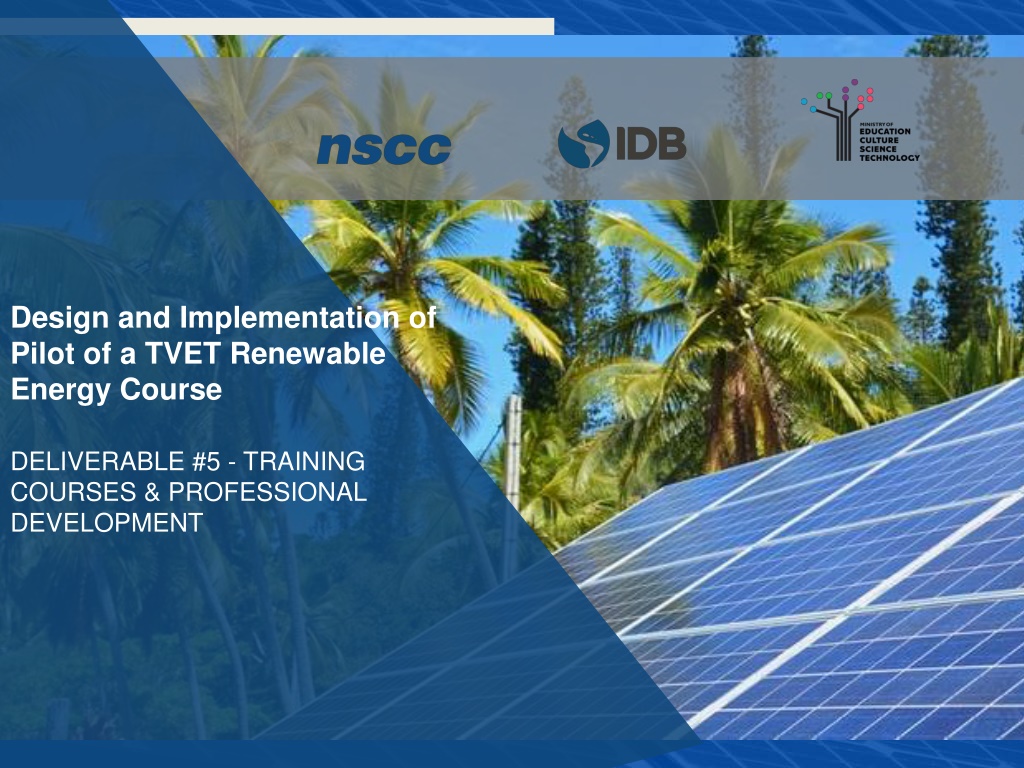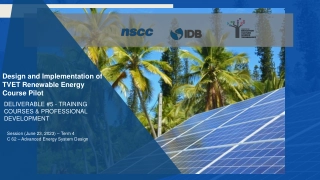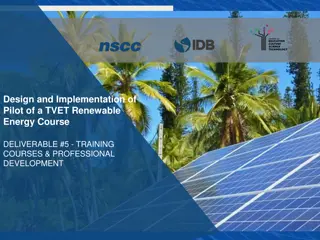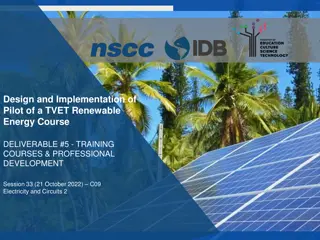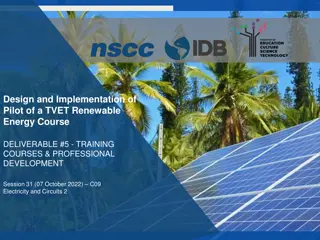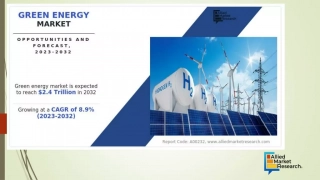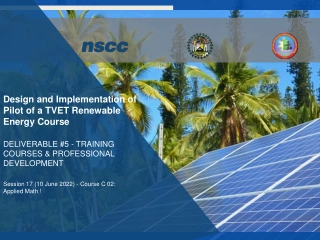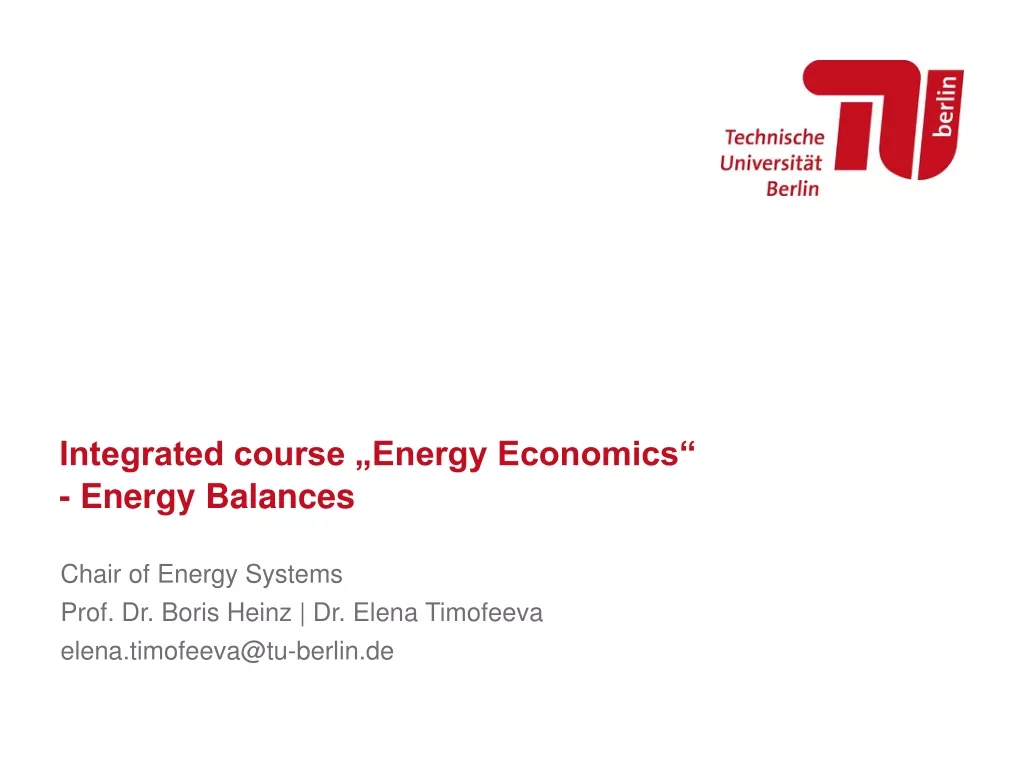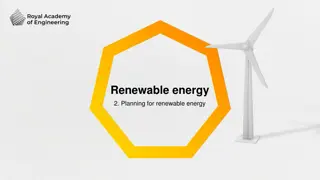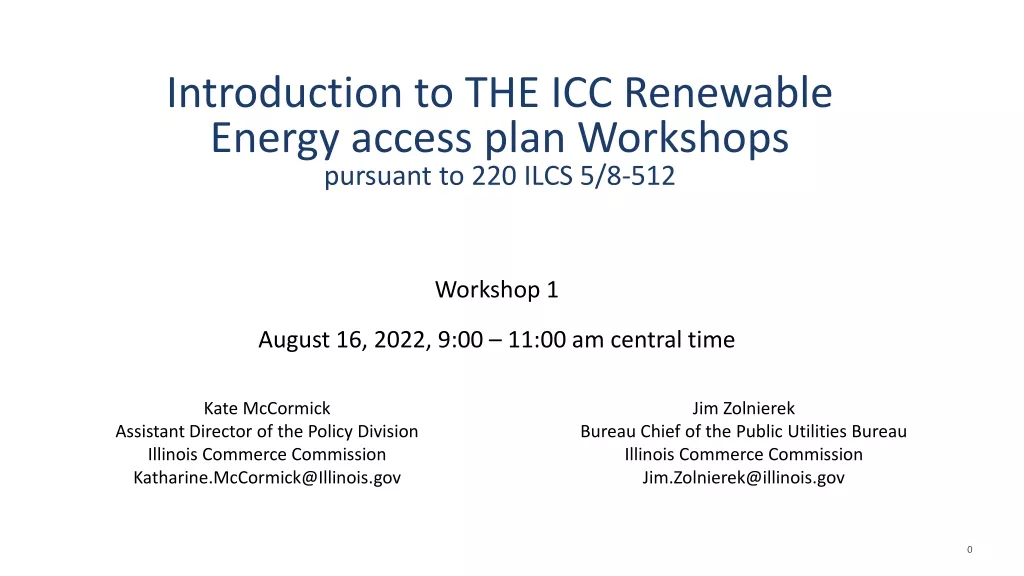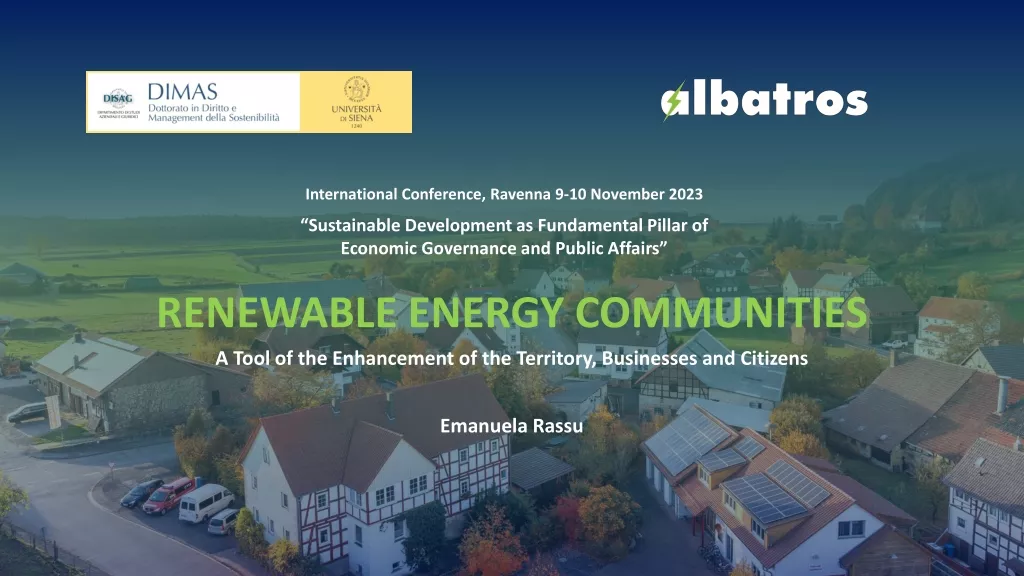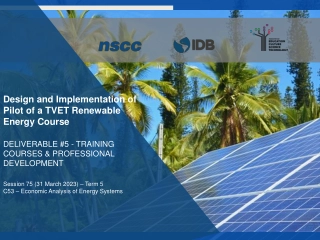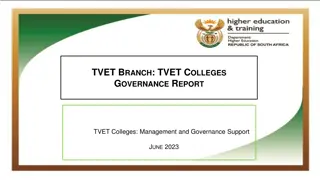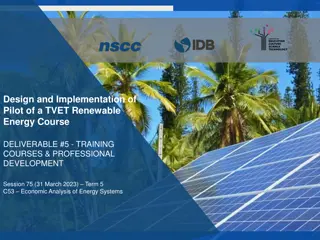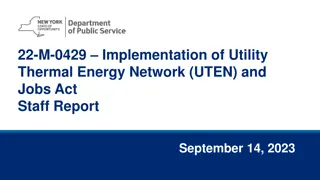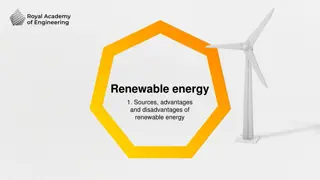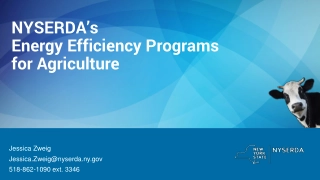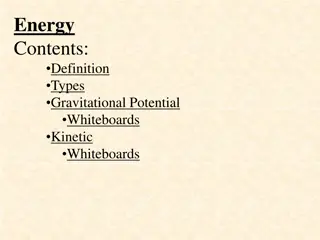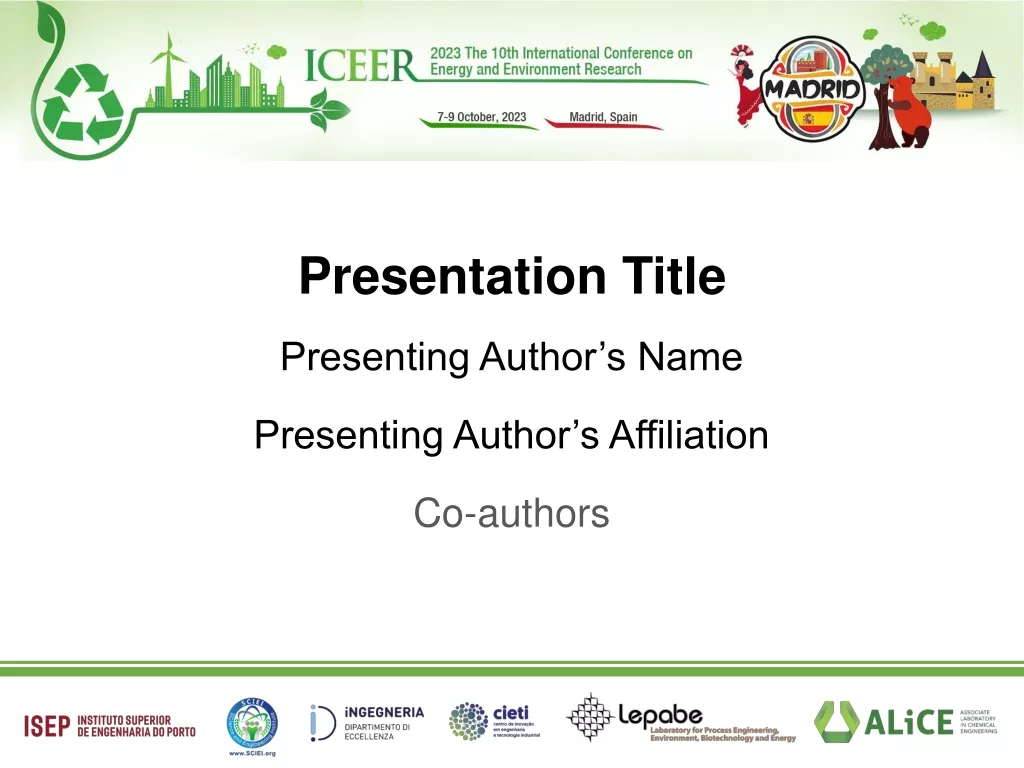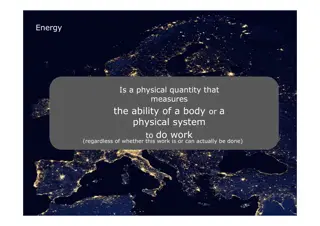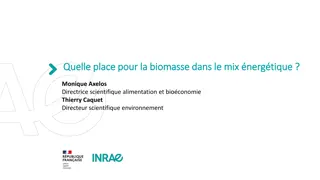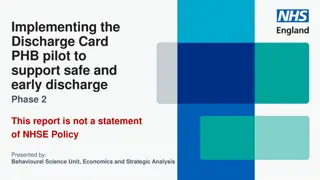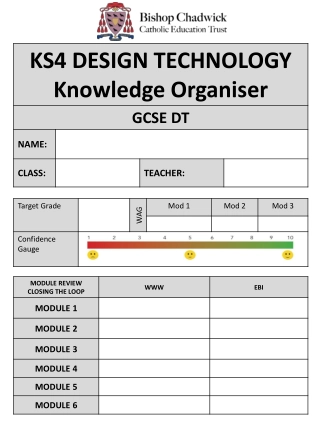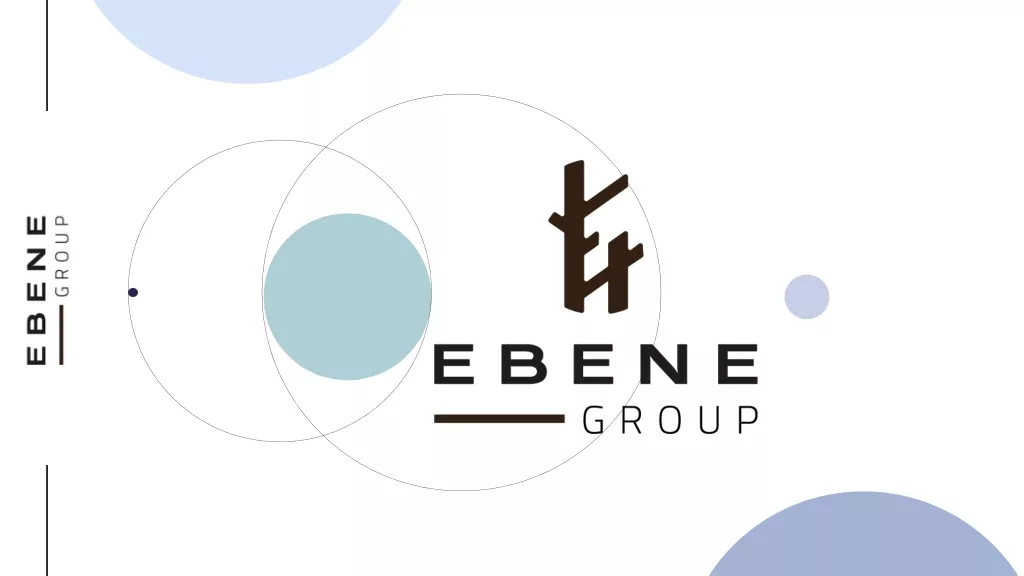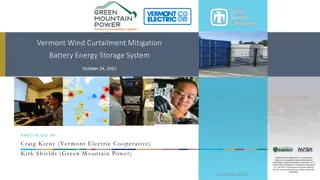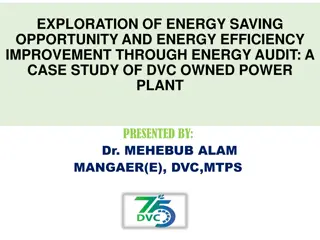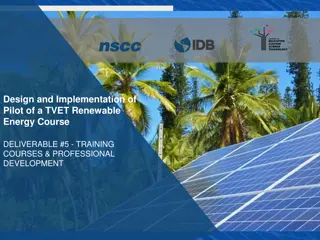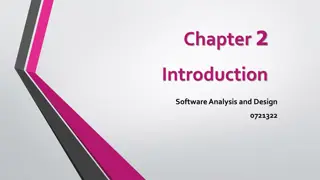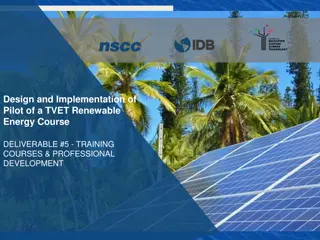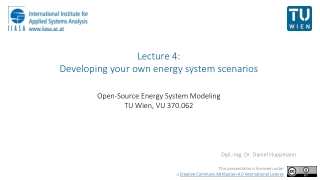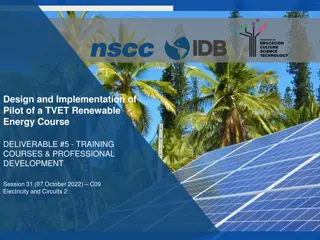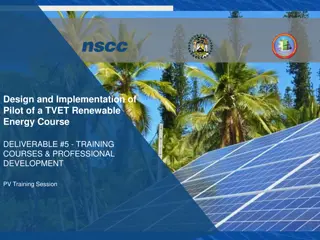Design and Implementation of Pilot of a TVET Renewable Energy Course
Explore the world of grid-tied inverters in the context of renewable energy education. Learn about their basic operation, types, and applications in connecting power sources to the grid. Discover the essential rules and standards established by organizations like IEEE and UL for safe and efficient grid connections. Dive into topics like anti-islanding, grid synchronization, and more.
Design and Implementation of Pilot of a TVET Renewable Energy Course
PowerPoint presentation about 'Design and Implementation of Pilot of a TVET Renewable Energy Course'. This presentation describes the topic on Explore the world of grid-tied inverters in the context of renewable energy education. Learn about their basic operation, types, and applications in connecting power sources to the grid. Discover the essential rules and standards established by organizations like IEEE and UL for safe and efficient grid connections. Dive into topics like anti-islanding, grid synchronization, and more.. Download this presentation absolutely free.
Presentation Transcript
Design and Implementation of Pilot of a TVET Renewable Energy Course DELIVERABLE #5 - TRAINING COURSES & PROFESSIONAL DEVELOPMENT
Grid Tied Inverters This module will introduce grid tied inverters. After this module, the learner will be able to: Describe the basic operation of an inverter. Identify the various types of grid interactive inverters. Match PV panels to inverter inputs
Grid Tied Inverters Calculate PV voltages for MPPT, based on temperatures. Select PV panels for microinverters.
Grid Tied Inverters At this point we know how a grid is established. Generators have been the focus. Inverters can also supply electrical energy to a grid.
Grid Tied Inverters The group IEEE (Institute of Electrical and Electronics Engineers) have established the rules for grids and connecting power sources to the grid. Then UL (Underwriters Laboratories) 1741which sets out the parameters for equipment connecting to a grid.
Grid Tied Inverters These inverters are called grid interactive. What makes them grid interactive is that they are designed with firmware (software built into the brains of the inverter) that follows the UL1741 rules. They also produce a pure sinewave output with less than 5 % distortion. They will synchronize to a grid and provide electrical power.
Grid Tied Inverters Questions?
Grid Tied Inverters A few of the rules that are part of the UL1741 are: Anti-Islanding This prevents the inverter from sending out power to a grid that is down. It keeps the line from being energized. It makes the inverter not stand alone. Utility workers will not be exposed to live wires when the grid is down.
Grid Tied Inverters Delay connecting to a grid This keeps the grid from being exposed to power before the utility stabilizes it. The inverter needs to see a stable grid for 5 minutes before it will connect to it. This does not affect the inverter when it sees the sun in the morning as long as the grid was live all night.
Grid Tied Inverters Must not stay connected if the voltage is out of range This keeps the inverter from staying connected or to connect to a grid where the voltage is too high or too low. The voltage range is + - 10% of the nominal value.
Grid Tied Inverters Must not stay connected if the frequency is out of range This keeps the inverter from staying connected or to connect to a grid where the frequency is too high or too low. The frequency range is + - 2.5% of the nominal value. 60Hz systems can only operate between 58.5Hz and 61.5 Hz
Grid Tied Inverters Must have a pure sinewave output that the harmonic distortion is less than 3-5 percent, This keeps noise from entering the grid from a poor-quality device. Picture courtesy author
Grid Tied Inverters Must have a ground fault protection scheme, This prevents the inverter from operating if there is a ground fault on the DC side.
Grid Tied Inverters Questions?
Grid Tied Inverters There three types of grid interactive inverters. String inverter Microinverter Hybrid inverter The next few slides provide a very basic explanation of each type.
Grid Tied Inverters String Inverter Picture courtesy Fronius
Grid Tied Inverters String inverters are the original type of inverters. String refers to solar PV panels connected in series in a string. By placing the panels in series, the amperage is lower than if connected in parallel. Voltage is increased. Power = Volts x Amps
Grid Tied Inverters Microinverter Picture courtesy author
Grid Tied Inverters Microinverters are an example of MLPE (Module Level Power Electronics) that go under the PV panel. These types of inverter to panel connections keeps the DC from leaving the roof or structure. Can be one panel per microinverter or multiple panels per microinverter. As of this time 4 panels per microinverter is available. They are mounted behind a panel.
Grid Tied Inverters Hybrid inverters Picture courtesy author
Grid Tied Inverters Hybrid inverters are a type of inverter that can be grid interactive or stand alone. Battery based PV connects to a charge controller Usually supports a generator connection
Grid Tied Inverters Hybrid inverters will be discussed in detail in their own module. They have a number of systems that interconnect.
Grid Tied Inverters Questions?
Grid Tied Inverters Grid interactive inverters can be either transformer coupled or transformer less coupled to the AC power source. The transformer inverters have an extra 2-4% loss because of the transformer. The transformer inverters are heavier as well.
Grid Tied Inverters Transformer less inverters are very popular in Europe. These inverters do not have electrical isolation between the PV negative and the neutral connection on the AC side. Electrical isolation is provided in a transformer inverter through the transformer.
Grid Tied Inverters Transformer inverters: Pros Due to the transformer, they have electrical isolation between the DC and AC which lowers the risk of shock and surges. Rugged and dependable.
Grid Tied Inverters Transformer inverters: Cons Require extra components which costs more. Bulky and take up larger footprint.
Grid Tied Inverters Transformer less inverters: Pros Lighter than transformer types. More efficient.
Grid Tied Inverters Transformer less inverters: Cons More prone to surges and shocks because the PV DC negative is tied to the AC neutral. Look for models with built in surge protection.
Grid Tied Inverters Fronius manufacturers both transformer and transformer less inverters. Their IG series has a transformer. Their Primo series is transformer less. The next few slides shows the difference in the connection between the two.
Grid Tied Inverters The IG series has a transformer. Picture courtesy Fronius
Grid Tied Inverters The connection of the Negative PV DC to ground before the DC to AC. Transformer is before the AC connection to the L1-L2-L3 and N. Picture courtesy Fronius
Grid Tied Inverters Questions?
Grid Tied Inverters The Primo series has no transformer. Picture courtesy Fronius
Grid Tied Inverters The PV DC negative is already tied to the neutral AC. Note more than one PV inputs. Picture courtesy Fronius
Grid Tied Inverters Note the subtle wiring changes in the grounding connection between the two inverter types. The installation manual is very important to follow.
Grid Tied Inverters Questions?
Grid Tied Inverters How do inverters capture the DC power from PV panels? One of two ways. They can connect directly to the panel / panels. They can have a charge controller pass the DC energy on to a battery and the inverter can take the battery energy and use it.
Grid Tied Inverters If they connect directly to the panel they produce what the PV panels are producing. If they use the battery energy, the inverter will start and stop based on the battery voltage. Stop producing at low battery voltage. Hybrid inverters use the battery method.
Grid Tied Inverters Both string and microinverters use MPPT technology to capture the DC power. MPPT stands for Maximum Power Point Tracking. To transfer power from one device to another it follows the Maximum Power Transfer Theorem
Grid Tied Inverters Maximum Power Transfer Theorem States the output resistance / impedance must equal the input resistance / impedance to transfer the most power between devices. An example is an audio amplifier matched to the correct speaker ohms. 4 to 4 or 8 to 8
Grid Tied Inverters Maximum Power Transfer Theorem As the sun radiation varies so does the internal resistance of the PV panel. The load would need to match to get maximum power from PV panel
Grid Tied Inverters To continually change the load would not be practical. MPPT is a circuit that shorts the PV panel. The short circuit current is put through an inductor. The inductor stores the energy in the air as magnetic energy.
Grid Tied Inverters The inductor will release this stored energy back into the circuit when the switch is opened. Picture courtesy author
Grid Tied Inverters The capacitor stores the energy. The inverter takes the stored energy and makes AC. Picture courtesy author
Grid Tied Inverters The rate at which the switch opens and closes is matched to the irradiance. To capture the most energy available. Picture courtesy author
Grid Tied Inverters The higher the radiation the faster the switching. The lower the radiation the slower the switching. Picture courtesy author
Grid Tied Inverters The maximum power that is available makes it way to the inverter input. Efficiencies can reach the high 90 s percent. This was a simplified explanation of MPPT circuits.
Grid Tied Inverters Questions?
Grid Tied Inverters Microinverter basics. A microinverter will connect directly to a PV panel and produce AC power from the DC power produced by the PV panel. Uses MPPT technology to capture the DC power.
